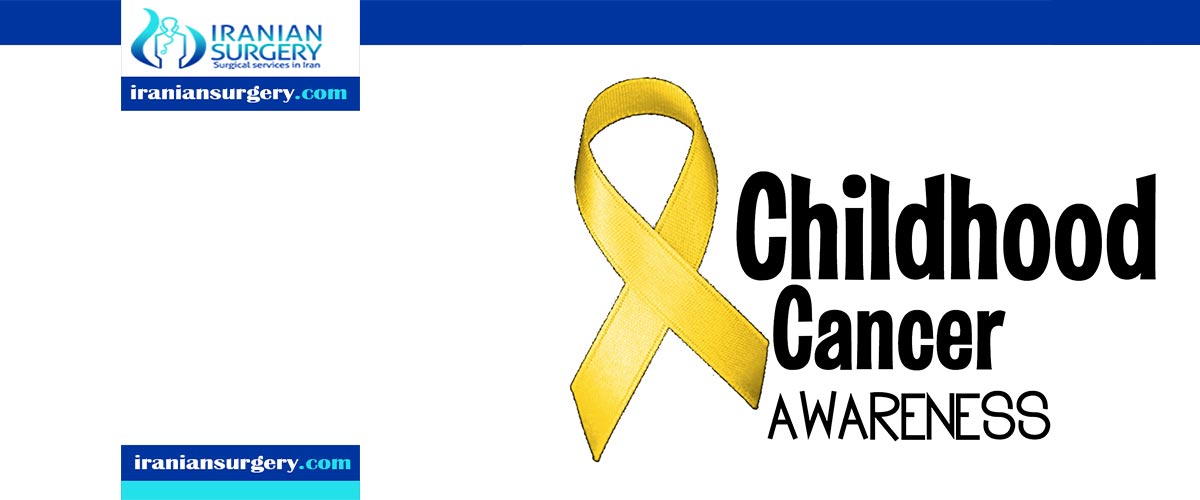Types of Cancer in Children
Types of Pediatric cancers
The types of cancers that occur most often in children are different from those seen in adults. The most common cancers of children are:
. Leukemia
. Brain and spinal cord tumors
. Neuroblastoma
. Wilms tumor
. Lymphoma (including both Hodgkin and non-Hodgkin)
. Rhabdomyosarcoma
. Retinoblastoma
. Bone cancer (including osteosarcoma and Ewing sarcoma)
Other types of cancers are rare in children, but they do happen sometimes. In very rare cases, children may even develop cancers that are much more common in adults.
Leukemia
Leukemias, which are cancers of the bone marrow and blood, are the most common childhood cancers. They account for about 28% of all cancers in children. The most common types in children are acute lymphocytic leukemia (ALL) and acute myeloid leukemia (AML). These leukemias can cause bone and joint pain, fatigue, weakness, pale skin, bleeding or bruising, fever, weight loss, and other symptoms. Acute leukemias can grow quickly, so they need to be treated (typically with chemotherapy) as soon as they are found.
Brain and spinal cord tumors
Brain and spinal cord tumors are the second most common cancers in children, making up about 26% of childhood cancers. There are many types of brain and spinal cord tumors, and the treatment and outlook for each is different.
Most brain tumors in children start in the lower parts of the brain, such as the cerebellum or brain stem. They can cause headaches, nausea, vomiting, blurred or double vision, dizziness, seizures, trouble walking or handling objects, and other symptoms. Spinal cord tumors are less common than brain tumors in both children and adults.
Neuroblastoma
Neuroblastoma starts in early forms of nerve cells found in a developing embryo or fetus. About 6% of childhood cancers are neuroblastomas. This type of cancer develops in infants and young children. It is rare in children older than 10. The tumor can start anywhere, but it usually starts in the belly (abdomen) where it is noticed as swelling. It can also cause other symptoms, like bone pain and fever.
Wilms tumor
Wilms tumor (also called nephroblastoma) starts in one, or rarely, both kidneys. It is most often found in children about 3 to 4 years old, and is uncommon in older children and adults. It can show up as a swelling or lump in the belly (abdomen). Sometimes the child might have other symptoms, like fever, pain, nausea, or poor appetite. Wilms tumor accounts for about 5% of childhood cancers.
Lymphomas
Lymphomas start in immune system cells called lymphocytes. These cancers most often start in lymph nodes or in other lymph tissues, like the tonsils or thymus. They can also affect the bone marrow and other organs. Symptoms depend on where the cancer starts and can include weight loss, fever, sweats, tiredness (fatigue), and lumps (swollen lymph nodes) under the skin in the neck, armpit, or groin.
The 2 main types of lymphoma are Hodgkin lymphoma (sometimes called Hodgkin disease) and non-Hodgkin lymphoma. Both types occur in children and adults.
. Hodgkin lymphoma accounts for about 3% of childhood cancers. It is more common, though, in early adulthood (usually in people in their 20s) and late adulthood (after age 55). Hodgkin lymphoma is rare in children younger than 5 years of age. This type of cancer is very similar in children and adults, including which types of treatment work best.
. Non-Hodgkin lymphoma makes up about 5% of childhood cancers. It is more likely to occur in younger children than Hodgkin lymphoma, but it is still rare in children younger than 3. The most common types of non-Hodgkin lymphoma in children are different from those in adults. These cancers often grow quickly and require intense treatment, but they also tend to respond better to treatment than most non-Hodgkin lymphomas in adults.
Rhabdomyosarcoma
Rhabdomyosarcoma starts in cells that normally develop into skeletal muscles. (These are the muscles that we control to move parts of our body.) This type of cancer can start nearly any place in the body, including the head and neck, groin, belly (abdomen), pelvis, or in an arm or leg. It may cause pain, swelling (a lump), or both. This is the most common type of soft tissue sarcoma in children. It makes up about 3% of childhood cancers.
Retinoblastoma
Retinoblastoma is a cancer of the eye. It accounts for about 2% of childhood cancers. It usually occurs in children around the age of 2, and is seldom found in children older than 6.
Retinoblastomas are usually found because a parent or doctor notices a child’s eye looks unusual. Normally when you shine a light in a child’s eye (or take a flash picture), the pupil (the dark spot in the center of the eye) looks red because of the blood in vessels in the back of the eye. In an eye with retinoblastoma, the pupil often looks white or pink.
Bone cancers
Cancers that start in the bones (primary bone cancers) occur most often in older children and teens, but they can develop at any age. They account for about 3% of childhood cancers.
Two main types of primary bone cancers occur in children:
. Osteosarcoma is most common in teens, and usually develops in areas where the bone is growing quickly, such as near the ends of the leg or arm bones. It often causes bone pain that gets worse at night or with activity. It can also cause swelling in the area around the bone.
. Ewing sarcoma is a less common type of bone cancer. It is most often found in young teens. The most common places for it to start are the pelvic (hip) bones, the chest wall (such as the ribs or shoulder blades), or in the middle of the leg bones. Symptoms can include bone pain and swelling.


